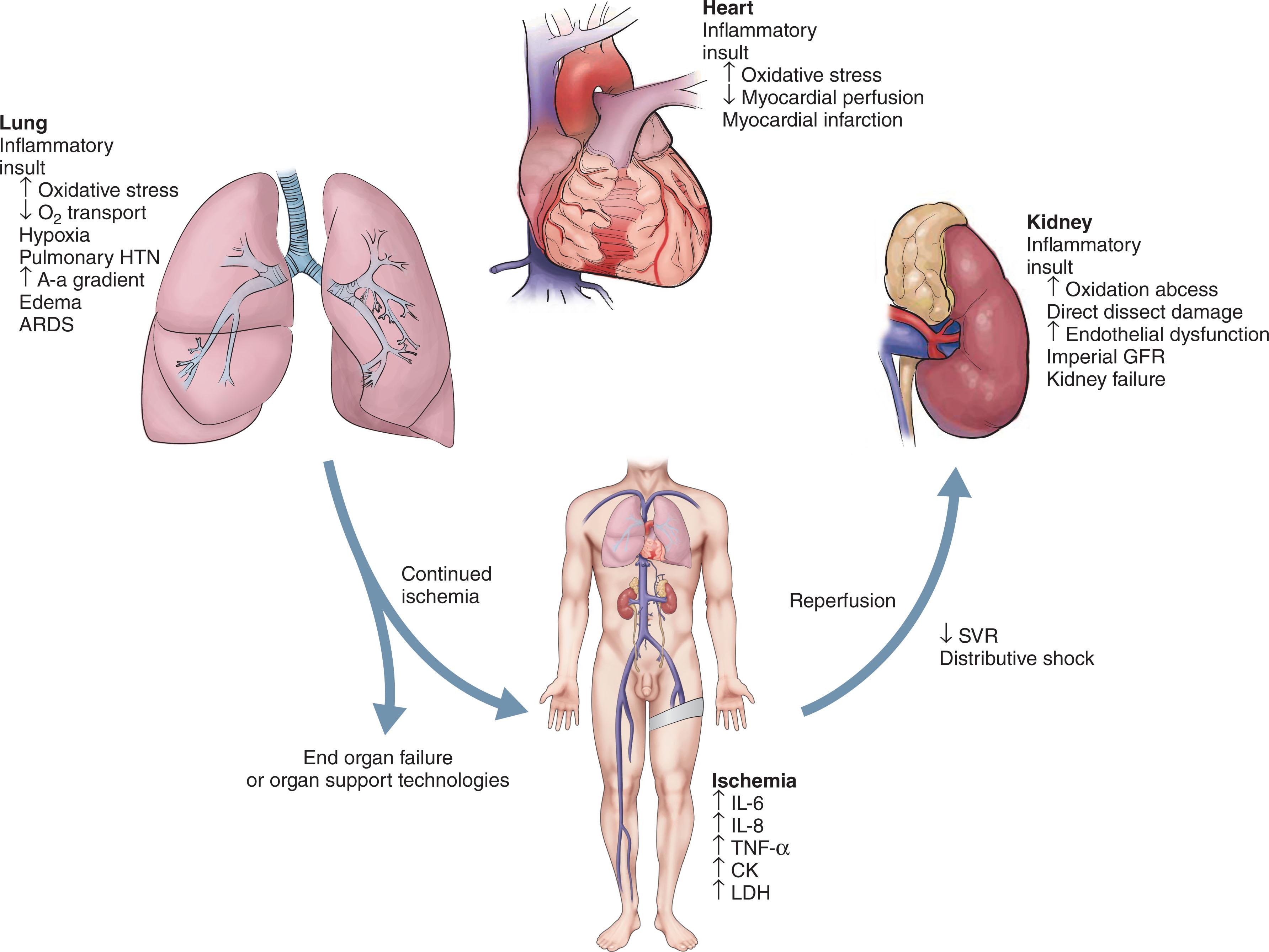Physical Address
304 North Cardinal St.
Dorchester Center, MA 02124
Mechanical trauma to major arteries often leads to significant vascular compromise to large tissue beds which then results in the reduction in oxygen delivery, cellular dysoxia, and cell death. This occurs in varying degrees, depending on the robustness of collateral blood flow to every anatomic region and organ in the body (e.g., muscle, kidney, lungs, liver, intestines, etc.). Regardless, it has been well documented that the degree and extent of tissue injury directly correlates with the duration of the ischemic insult. As arterial vessels are repaired and blood flow is restored via a variety of open and endovascular techniques described in chapters throughout this textbook, varying degrees of metabolic and end-organ consequences can be expected and are widely characterized as “ischemia-reperfusion” injury. Reperfusion of damaged skeletal muscle often results in profound metabolic and inflammatory derangements secondary to the release and circulation of cellular contents. This often is compounded by concomitant direct tissue injury, such as blunt force injury or crush, which can augment the metabolic derangement several fold. Globally, the dysregulated immune-inflammatory cascade that ensues can trigger a distributive shock characterized by capillary leak, hemodynamic instability, coagulopathy, and end-organ failure ( Fig. 14.1 ). Recent disruptive advances in the field of vascular surgery in the form of endovascular occlusion techniques for hemorrhage control and a variety of endovascular repair options have pushed the physiological limits of what is humanly possible to sustain life after severe injury. As such, an increasing number of severely injured patients are surviving longer into the hospitalization and are more metabolically deranged than ever with varying degrees of end-organ injury. Fortunately, the field of critical care has experienced an equally formidable leap in medical innovation in the form of various extracorporeal organ support technologies. This chapter will review the latest advances and techniques to assist vascular trauma specialists in the management of metabolic derangements and organ failure, with a focus on renal and lung support.

Become a Clinical Tree membership for Full access and enjoy Unlimited articles
If you are a member. Log in here